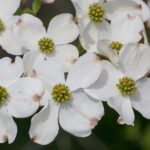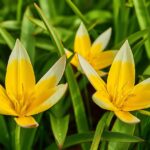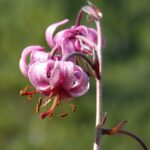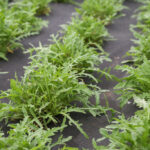Caring for the flowering dogwood
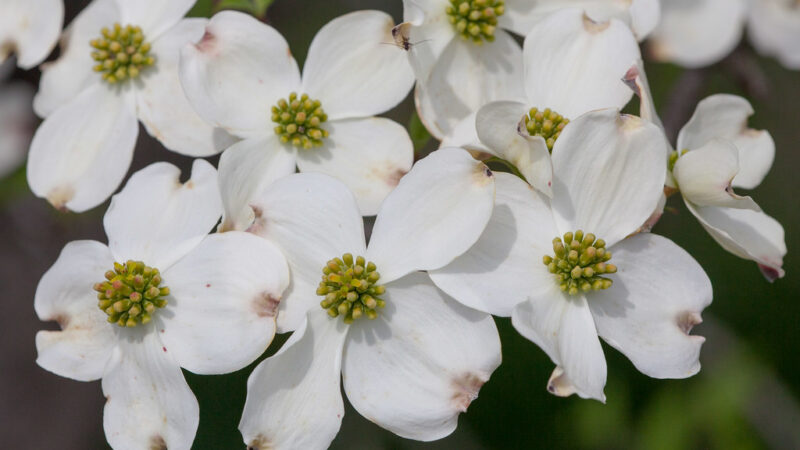
The flowering dogwood, known for its stunning bracts in spring and vibrant foliage in autumn, is a cherished ornamental tree in many landscapes. Proper care is essential to ensure its health, longevity, and spectacular seasonal displays. This involves a holistic understanding of its needs, from soil composition and site selection to ongoing maintenance throughout the year. Achieving success with this species requires attention to detail, as it can be sensitive to environmental stressors. A well-cared-for dogwood not only enhances the beauty of a garden but also supports local wildlife, offering fruit for birds in the late autumn and winter months.
Site selection and soil preparation
Choosing the right location is the most critical first step in ensuring a flowering dogwood thrives. These trees are naturally understory plants, meaning they flourish in conditions that mimic the edge of a woodland. Therefore, a site offering morning sun and afternoon shade is ideal, especially in warmer climates where the intense afternoon sun can scorch the leaves and stress the tree. In cooler, more northern regions, they can tolerate more direct sun, but protection from harsh afternoon light remains beneficial. Proper air circulation is also important to prevent fungal diseases, so avoid planting in overly dense or enclosed areas.
The soil environment is equally crucial for the health of Cornus florida. These trees demand well-drained, acidic soil with a pH typically ranging between 5.5 and 6.5. They do not tolerate “wet feet,” so heavy clay soils that retain excessive moisture can lead to root rot, one of the most common reasons for their decline. Before planting, it is highly advisable to amend the soil with ample organic matter, such as compost or well-rotted leaf mold. This not only improves soil structure and drainage but also provides a slow release of essential nutrients, creating an ideal rooting environment.
When preparing the planting hole, the aim is to create a welcoming space for the roots to expand. The hole should be dug two to three times wider than the root ball but no deeper. Planting the tree too deep is a frequent mistake that can lead to collar rot and eventual death. The top of the root ball should sit slightly above the surrounding soil level to account for settling and to ensure the root flare, where the trunk widens at the base, remains exposed to the air. Backfilling should be done with the amended native soil, avoiding the creation of a “pot” of different soil texture that can impede water movement.
Finally, considering the tree’s mature size during site selection will prevent future problems. A flowering dogwood can reach a height and spread of 15 to 25 feet, so it should be planted away from buildings, power lines, and sidewalks. Allowing adequate space ensures the tree can develop its natural, graceful, horizontally branched form without the need for excessive pruning. Proper spacing also guarantees it will not have to compete aggressively with other large trees for light, water, and nutrients, reducing overall stress and increasing its resilience to pests and diseases.
More articles on this topic
Mulching and moisture management
Consistent moisture is paramount for the establishment and long-term health of a flowering dogwood. These trees have a shallow root system that can dry out quickly, particularly during hot, dry summer months. For the first two years after planting, a deep and regular watering schedule is essential to encourage the development of a robust root system that can sustain the tree. A thorough soaking once or twice a week is generally more effective than frequent, light sprinklings, as it ensures water penetrates deep into the soil profile where the roots are growing.
Applying a layer of organic mulch is one of the most beneficial practices for dogwood care. A two- to four-inch layer of mulch, such as pine bark, shredded leaves, or wood chips, should be spread around the base of the tree, extending out to the drip line (the edge of the canopy). This mulch layer helps to conserve soil moisture by reducing evaporation, moderates soil temperature by keeping the roots cool in summer and insulated in winter, and suppresses weed growth that would otherwise compete for resources. It also gradually breaks down, adding valuable organic matter back into the soil.
Proper mulch application technique is important to prevent potential harm. The mulch should be kept several inches away from the trunk itself, creating a donut-like shape rather than a volcano pile against the bark. Piling mulch directly against the trunk can trap moisture, leading to bark decay and creating a welcoming environment for fungal diseases and boring insects. This small gap allows for essential air circulation around the base of the tree, keeping the critical root flare area dry and healthy.
Over time, it is important to monitor the soil moisture beneath the mulch layer to adjust watering practices accordingly. While mulch is excellent at retaining moisture, it can sometimes lead to overly saturated conditions, especially in poorly drained soils or during periods of heavy rainfall. Before watering, it is wise to check the soil a few inches deep; if it feels moist, watering can be delayed. As the tree matures and its root system becomes more extensive, it will become more drought-tolerant, but it will still benefit from supplemental irrigation during prolonged dry spells to prevent stress.
More articles on this topic
Understanding growth habits
The flowering dogwood possesses a distinct and elegant growth habit that contributes significantly to its ornamental value. It is typically a small deciduous tree, developing a low-branching, flat-topped, and spreading canopy over time. The branches often grow in horizontal tiers, creating a layered effect that is particularly striking in the landscape, both when in bloom and during the winter months when the structure is bare. Understanding this natural form is key to proper placement and pruning, as the goal is to enhance this inherent beauty, not to fight it.
The rate of growth for a flowering dogwood is generally considered slow to moderate. In ideal conditions, one might expect about one to two feet of growth per year, but this can vary based on factors like soil quality, moisture availability, and sunlight exposure. This slower growth rate contributes to its strong wood and longevity, but it also means that recovery from significant damage or improper pruning can be a lengthy process. Patience is essential when cultivating this species, as it takes several years for a young tree to reach its full, spectacular potential.
The life cycle of its annual growth is also noteworthy. The famous “flowers” are not true flowers but rather four large, showy bracts that surround a cluster of small, inconspicuous greenish-yellow flowers. These bracts emerge in early to mid-spring, often before the leaves fully unfurl, and can be white, pink, or reddish depending on the cultivar. Following the bloom, the foliage develops, providing a lush green canopy through the summer. This is followed by the development of glossy red fruits, called drupes, which mature in the fall and are a valuable food source for birds.
The tree’s autumn display is another of its most prized attributes. As temperatures cool, the leaves transition to brilliant shades of red, reddish-purple, and scarlet, providing a stunning finale to the growing season. The intensity of the fall color can be influenced by weather conditions, with the most vibrant displays often occurring after a period of sunny days and cool, but not freezing, nights. Recognizing these seasonal phases and growth characteristics allows for a deeper appreciation of the tree and informs care practices designed to support each stage of its yearly cycle.
Seasonal care calendar
Spring is a critical season for the flowering dogwood, as it marks the beginning of the active growing period. This is the time to apply a balanced, slow-release fertilizer formulated for acid-loving trees, just as the buds begin to swell. This application provides the necessary nutrients to support vigorous new growth and a profuse floral display. Light pruning can also be performed in early spring to remove any branches that were damaged over the winter, but heavy pruning should be avoided as this can remove the flower buds that formed during the previous summer. Monitoring for the first signs of fungal diseases like powdery mildew or spot anthracnose is also crucial during the typically wet spring weather.
Summer care primarily revolves around managing water and heat stress. As temperatures rise, the shallow root system of the dogwood can be vulnerable to drying out, making consistent watering essential, particularly for young trees. The mulch layer applied in spring plays a vital role during this time, helping to keep the soil cool and moist. It is also a key period to watch for insect pests, such as the dogwood borer, which tends to lay its eggs on the trunk from late spring into mid-summer. Avoiding mechanical injuries from lawnmowers or string trimmers is critical, as these wounds provide easy entry points for borers.
As autumn arrives, the focus of care shifts towards preparing the tree for dormancy. Watering should be gradually reduced as the weather cools and rainfall increases, which helps to harden off the new growth in preparation for winter. This is also the time to appreciate the spectacular fall foliage and the bright red berries that adorn the branches. Once the leaves have fallen, a final cleanup of debris from around the base of the tree is recommended to reduce the overwintering sites for fungal spores and insect pests, ensuring a healthier start the following spring.
Winter is the season of dormancy for the flowering dogwood, and for mature, well-established trees, little care is typically needed. However, for young trees, winter protection can be beneficial, especially in colder climates or exposed locations. Wrapping the trunk with a commercial tree guard can protect the thin bark from sunscald, which occurs when the sun warms the bark on a cold day, followed by a rapid freeze at night. It also provides a physical barrier against rodents that might gnaw on the bark. Ensuring the mulch layer is adequate will also help to insulate the root system from extreme cold.
Fertilization strategies
Proper fertilization is key to promoting healthy growth and abundant flowering in Cornus florida, but it is a task that requires a measured approach. Over-fertilizing can be more detrimental than not fertilizing at all, as it can lead to excessive, weak growth that is more susceptible to pests and diseases, and can even burn the sensitive root system. The primary goal of a fertilization program should be to supplement the soil’s existing nutrients, not to force unnatural growth. Before applying any fertilizer, it is always best to conduct a soil test to determine the specific nutrient deficiencies and the soil’s pH level.
For flowering dogwoods, the best time to fertilize is in the late fall or early spring, just before the new growth begins. A single application per year is often sufficient for established trees growing in reasonably fertile soil. A slow-release granular fertilizer formulated for acid-loving plants, such as those used for azaleas or rhododendrons, is an excellent choice. This type of fertilizer provides a steady supply of nutrients over an extended period and helps to maintain the acidic soil conditions that dogwoods prefer. A balanced formula, such as 10-10-10, can also be used if the soil test indicates no specific major deficiencies.
The method of application is just as important as the choice of fertilizer. The fertilizer should be broadcast evenly over the soil surface, starting about a foot away from the trunk and extending out to the drip line of the branches. It is crucial to avoid concentrating the fertilizer at the base of the tree, as this can cause severe damage to the trunk and root crown. After spreading the granules, they should be lightly worked into the top layer of soil or mulch and then watered in thoroughly. This helps to activate the fertilizer and move the nutrients down into the root zone where they can be absorbed.
It is important to recognize the signs of both nutrient deficiency and excess. A tree that has pale green or yellowish leaves (a condition known as chlorosis), stunted growth, and sparse flowering may be suffering from a lack of essential nutrients. Conversely, a tree that produces a great deal of lush, dark green foliage but few flowers may be receiving too much nitrogen. Adjusting the fertilization strategy based on these visual cues, in conjunction with soil test results, will ensure the tree receives precisely what it needs for optimal health and beauty without the risks associated with over-application.
Common challenges and solutions
One of the most significant challenges in growing flowering dogwoods is their susceptibility to a range of diseases. Dogwood anthracnose is a particularly serious fungal disease that can cause leaf spots, twig dieback, and cankers on the trunk, potentially leading to the death of the tree. To manage this, it is vital to promote good air circulation by avoiding overcrowding and selectively pruning the canopy. Planting disease-resistant cultivars, such as those from the ‘Appalachian’ series, is also a highly effective preventative strategy. Proper watering techniques that avoid wetting the foliage can further reduce the risk of fungal infections.
Insect pests can also pose a threat, with the dogwood borer being the most destructive. The larva of this clearwing moth tunnels into the cambium layer of the trunk, disrupting the flow of water and nutrients. Borers are particularly attracted to trees that are already stressed or have sustained mechanical injuries. Therefore, the best defense is prevention: keeping the tree healthy and vigorous through proper care and protecting the trunk from damage from lawn equipment. If an infestation is detected, insecticides specifically targeting borers may be necessary, applied at the correct time of year to coincide with the moth’s egg-laying period.
Environmental stress is another common challenge that can lead to a decline in a dogwood’s health. Drought stress is a major issue, causing leaf scorch, wilting, and making the tree more vulnerable to borers and diseases. Ensuring adequate and consistent moisture, especially during dry periods, is crucial. Conversely, waterlogged soil from poor drainage is equally damaging, leading to root rot. Careful site selection and soil amendment before planting are the primary solutions to prevent issues related to soil moisture.
Lastly, gardeners may face the challenge of a dogwood that fails to bloom. This can be caused by a variety of factors. The tree may be too young, as dogwoods often take several years to mature and begin flowering. Insufficient sunlight is another common cause; while they prefer afternoon shade, they do need several hours of morning sun to set flower buds effectively. An imbalance of nutrients, particularly an excess of nitrogen, can promote vegetative growth at the expense of flowers. Pruning at the wrong time of year, such as in late summer or fall, can also remove the flower buds that have already formed for the following spring.
Long-term health and rejuvenation
Maintaining the long-term health of a flowering dogwood involves consistent adherence to best care practices over the life of the tree. As a dogwood matures, its needs may shift slightly. While it becomes more drought-tolerant, it will still benefit from deep watering during extended dry spells to maintain its vigor. Annual inspection of the tree is a good practice to catch any potential issues, such as dead or crossing branches, signs of disease, or insect activity, before they become serious problems. A healthy, mature dogwood is a resilient tree, but this resilience is built upon a foundation of good care in its younger years.
Over time, an older dogwood may begin to show signs of decline, such as reduced flowering, thinning canopy, or increased deadwood. While this is a natural part of the aging process, some rejuvenation practices can help to extend its life and improve its appearance. Careful and selective pruning to remove dead, damaged, or diseased wood is the first step. This not only improves the tree’s aesthetics but also removes potential entry points for pests and pathogens and can improve light penetration and air circulation within the canopy.
In some cases, a more significant rejuvenation pruning may be considered for a severely overgrown or declining tree, though this should be approached with caution. This involves thinning out some of the older, less productive branches to encourage the growth of new, more vigorous shoots. Such pruning should be done gradually over several years rather than all at once to avoid shocking the tree. The goal is to slowly reshape the canopy and stimulate fresh growth without removing more than 20-25% of the tree’s live canopy in any single year.
Finally, ensuring the soil environment remains optimal is crucial for the longevity of an aging dogwood. The organic mulch layer should be replenished annually to continue providing its benefits of moisture retention, temperature moderation, and nutrient cycling. Periodically, a soil test can be performed to check if the pH has shifted or if nutrient levels have become depleted, allowing for targeted amendments. By providing this consistent, long-term care, a flowering dogwood can remain a beautiful and healthy centerpiece in the landscape for many decades.
📷 Flickr / Szerző: David Illig / Licence: CC BY-NC-SA 2.0









